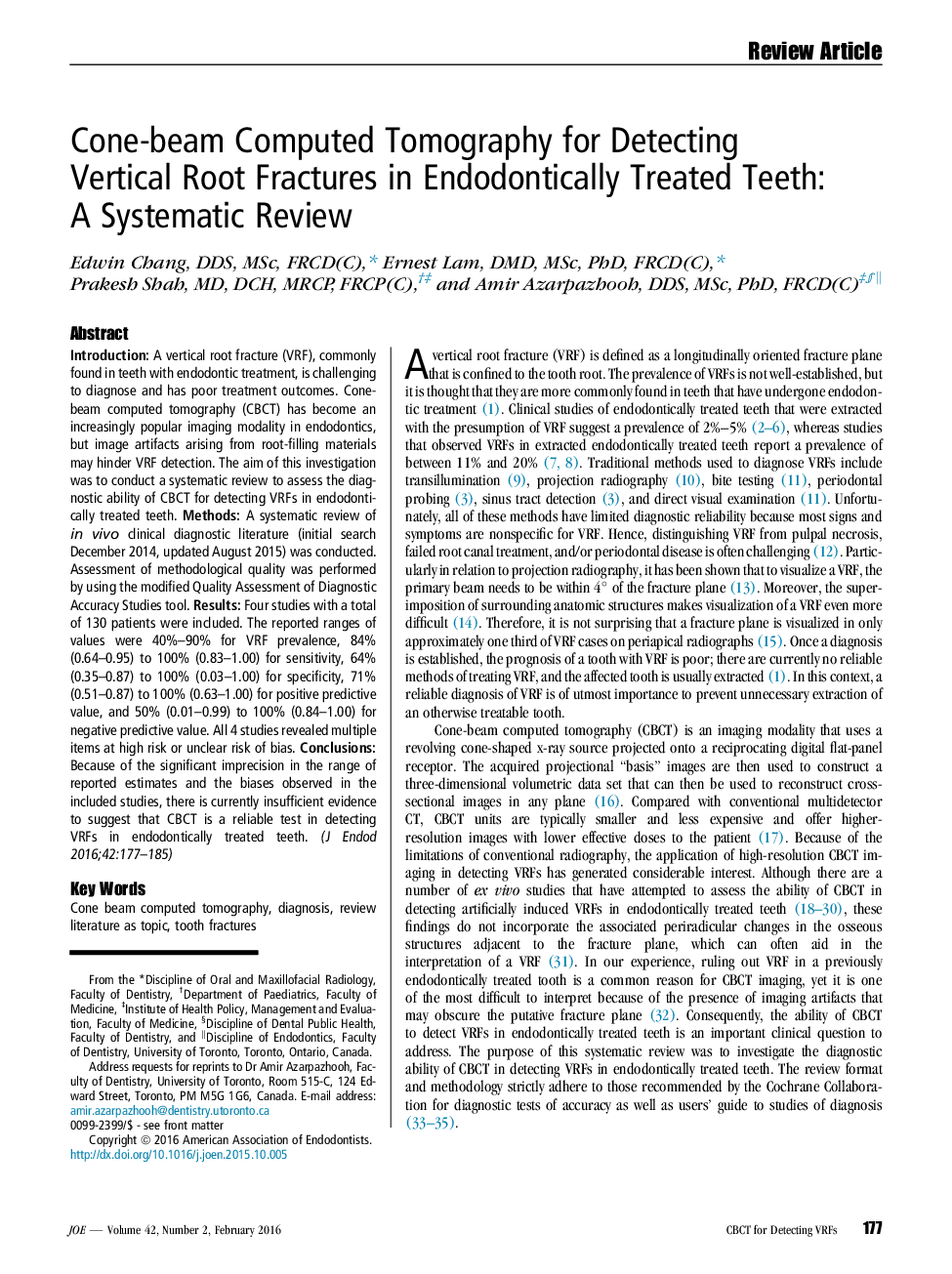| Article ID | Journal | Published Year | Pages | File Type |
|---|---|---|---|---|
| 3150033 | Journal of Endodontics | 2016 | 9 Pages |
•Systematic review assessing CBCT in detecting vertical root fractures (VRF).•Only review solely dedicated to assessment of endodontically treated teeth.•Only 4 relevant studies included in analysis, with a total of 130 patients.•Currently insufficient evidence for reliability of CBCT for detecting VRF.
IntroductionA vertical root fracture (VRF), commonly found in teeth with endodontic treatment, is challenging to diagnose and has poor treatment outcomes. Cone-beam computed tomography (CBCT) has become an increasingly popular imaging modality in endodontics, but image artifacts arising from root-filling materials may hinder VRF detection. The aim of this investigation was to conduct a systematic review to assess the diagnostic ability of CBCT for detecting VRFs in endodontically treated teeth.MethodsA systematic review of in vivo clinical diagnostic literature (initial search December 2014, updated August 2015) was conducted. Assessment of methodological quality was performed by using the modified Quality Assessment of Diagnostic Accuracy Studies tool.ResultsFour studies with a total of 130 patients were included. The reported ranges of values were 40%–90% for VRF prevalence, 84% (0.64–0.95) to 100% (0.83–1.00) for sensitivity, 64% (0.35–0.87) to 100% (0.03–1.00) for specificity, 71% (0.51–0.87) to 100% (0.63–1.00) for positive predictive value, and 50% (0.01–0.99) to 100% (0.84–1.00) for negative predictive value. All 4 studies revealed multiple items at high risk or unclear risk of bias.ConclusionsBecause of the significant imprecision in the range of reported estimates and the biases observed in the included studies, there is currently insufficient evidence to suggest that CBCT is a reliable test in detecting VRFs in endodontically treated teeth.
